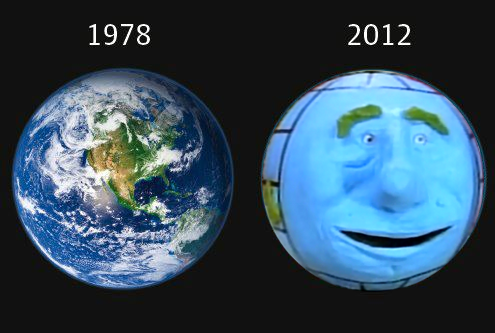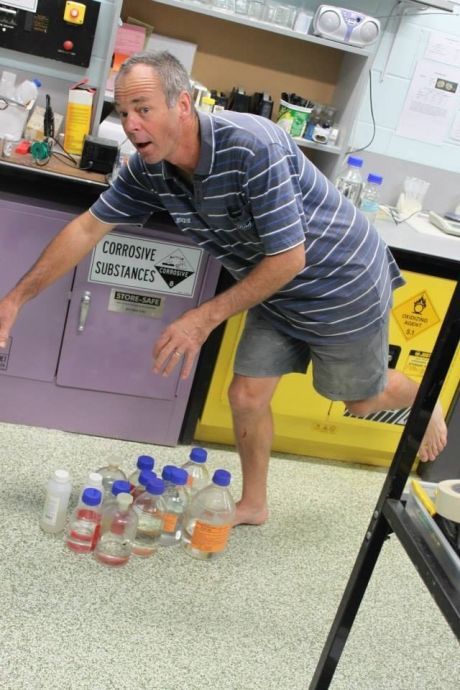Plutoisnotaplanet - Gnat In Space

More Posts from Plutoisnotaplanet and Others

Scientists just spotted an adorable star that barely even qualifies as one
Sometimes, scientists’ categories for things can be a little demeaning. For example: the “failed star” designation for objects that are larger than planets but smaller than stars.
About 600 light-years away, EBLM J0555-57Ab just barely missed the failed star category. But as will be published in an upcoming issue of the journal Astronomy & Astrophysics, it’s just a hair over the boundary, making it one of the smallest stars we know of.
“Failed star” is actually a factual statement — it just means something isn’t large enough to manage to bang hydrogen atoms together to form helium, the basic process at the heart of a burning star.
EBLM J0555-57Ab looks a bit like it shouldn’t have made the cut: It’s only a tiny bit larger than Saturn, or about one-twelfth the size of our sun. Read more (7/12/17)
follow @the-future-now
lov ur work. lov the pluto. lion king isnt a planet!!
tru tru tru thx for the kind words, sunglasses pal


is it possible that plants have consciousness?
this is actually a small sub branch of botany thats been growing and gaining some recognition in the past 5 years or so called plant cognition! we’ve been thinking about if plants can possibly be intelligent to any degree for centuries, but the main paper that started up this huge discussion in the modern era was one called Experience Teaches Plants to Learn Faster and Forget Slower in Environments Where It Matters by Monica Gagliano, a plant researcher in Australia who specializes in it. because the results indicated that plants were possible of learning and retaining information in a kind of memory in response to environmental changes, it received a lot of backlash and denial- generally in science, that kind of intelligent reaction to an organism’s environment is a good indicator of cognitive behavior in the organism. it got rejected by 10 different journals before being published in 2014.
the experiment worked like this. i’ve talked before about mimosa pudica, a tropical plant that curls its leaves back when touched (they go back to normal in a few minutes):

this is to help deter predators among other things. but in this experiment, Gagliano used it as an indicator of stimulus and to test cognitive function. It’s well known that pudica has a rudimentary nervous system that can even be temporarily inhibited using anesthetics (just like ours can!). she hooked up a ton of these plants in pots to identical rail systems that allowed them to be lightly dropped in an identical way, juuuuust heavy enough to trigger the stimulus so all the leaves drop down when they hit the bottom (a piece of foam so they wouldn’t actually hurt the plants). every time the plants would be dropped, they would close up.
but after the plants were dropped about 60 times each, they stopped responding to the drop.
they remembered that no harm was coming from this action and decided that it was against their best interests to keep expending energy closing their leaves. they 200% learned to stop.
she decided to test it further. she put some of the plants in a shaker and let them receive a more jarring response; the plants closed up as usual. then, she put them back in the droppers and dropped them again. they didn’t close up. they had remembered that response. this dispels the obvious rebuttal to this experiment of the plants just being tired; they still closed up when stimulated differently.
they just chose not to close up when they hit a stimulus they remembered.
it turns out that not only could they remember to keep their leaves open when dropped on the apparatus, but they remembered after 28 days when she kept testing it!! apparently by the end of the experiment, all the plants had decided to keep their leaves open when dropped!!!!
how do they do this?? we literally dont know. they have no central brain, only a basic nervous system. can other plants do this???
well, adding onto that, venus fly traps can count! like. they have three hairs inside their traps, and all three must be touched within 20 seconds for the trap to close. once closed, those three trigger hairs must continue to be stimulated by thrashing prey, or the trap will reopen.
so yeah like. basically ‘are they sentient’: apparently to an extent???? we dont know exactly why or how but they are??? maybe???? sort of????? at least some of them are?? but they dont have a brain so everyones like????????????????????? maybe its through a signaling network????????????????? but like how would that even work?????????
plant consciousness is still new enough to be dismissed as crazy by a lot of biologists but like. the evidence is there. we don’t know a whole lot and its clearly a radically different kind of intelligence than we know in animals, but it’s there and we 200% dont know how it works yet or even the full extent of how plants use this intelligence (for example: does a redwood have the same intelligence as a venus fly trap?? how does it learn things and use that knowledge???)
national geographic wrote an awesome article visualizing the experiment here if you want to read more!
!!!

NASA scientists have reported that they’ve successfully tested an engine called the electromagnetic propulsion drive, or the EM Drive, in a vacuum that replicates space. The EM Drive experimental system could take humans to Mars in just 70 days without the need for rocket fuel, and it’s no exaggeration to say that this could change everything.
But before we get too excited (who are we kidding, we’re already freaking out), it’s important to note that these results haven’t been replicated or verified by peer review, so there’s a chance there’s been some kind of error. But so far, despite a thorough attempt to poke holes in the results, the engine seems to hold up.
Continue Reading.
I remember first learning that you can cry from any emotion, that emotions are chemical levels in your brain and your body is constantly trying to maintain equilibrium. so if one emotion sky rockets, that chemical becomes flagged and signals the tear duct to open as an exit to release that emotion packaged neatly within a tear. Everything made sense after learning that. That sudden stability of your emotions after crying. How crying is often accompanied by the inability to feel any other emotion in that precise moment. And it is especially beautiful knowing that it is even possible to experience so much beauty or love or happiness that your body literally can’t hold on to all of it. So what I’ve learned is that crying signifies that you are feeling as much as humanely possible and that is living to the fullest extent. So keep feeling and cry often and as much as needed
-
 catsandwildlife liked this · 3 weeks ago
catsandwildlife liked this · 3 weeks ago -
 rottnprincss liked this · 6 months ago
rottnprincss liked this · 6 months ago -
 whoistylerkim liked this · 10 months ago
whoistylerkim liked this · 10 months ago -
 neuroxdegenerating liked this · 10 months ago
neuroxdegenerating liked this · 10 months ago -
 kawaiidesu reblogged this · 10 months ago
kawaiidesu reblogged this · 10 months ago -
 kawaiidesu liked this · 10 months ago
kawaiidesu liked this · 10 months ago -
 antsday liked this · 1 year ago
antsday liked this · 1 year ago -
 strangedandelion liked this · 1 year ago
strangedandelion liked this · 1 year ago -
 justrandomboiwhatev liked this · 1 year ago
justrandomboiwhatev liked this · 1 year ago -
 n0-phmind-to-think reblogged this · 1 year ago
n0-phmind-to-think reblogged this · 1 year ago -
 n0-phmind-to-think liked this · 1 year ago
n0-phmind-to-think liked this · 1 year ago -
 wattleflower reblogged this · 1 year ago
wattleflower reblogged this · 1 year ago -
 wattleflower liked this · 1 year ago
wattleflower liked this · 1 year ago -
 whoviancumberbunny reblogged this · 1 year ago
whoviancumberbunny reblogged this · 1 year ago -
 whoviancumberbunny liked this · 1 year ago
whoviancumberbunny liked this · 1 year ago -
 incandescent-teddybear reblogged this · 1 year ago
incandescent-teddybear reblogged this · 1 year ago -
 nycinfernoparty liked this · 1 year ago
nycinfernoparty liked this · 1 year ago -
 howdyironically reblogged this · 2 years ago
howdyironically reblogged this · 2 years ago -
 alex-dante liked this · 2 years ago
alex-dante liked this · 2 years ago -
 wimpy-imp reblogged this · 2 years ago
wimpy-imp reblogged this · 2 years ago -
 salvy-deldroid liked this · 2 years ago
salvy-deldroid liked this · 2 years ago -
 screamingwombatgirl liked this · 2 years ago
screamingwombatgirl liked this · 2 years ago -
 theresbeena-glitch liked this · 2 years ago
theresbeena-glitch liked this · 2 years ago -
 squidy-tee-png reblogged this · 2 years ago
squidy-tee-png reblogged this · 2 years ago
welcome to my space space (see what i did there) (space means two different things)
232 posts



